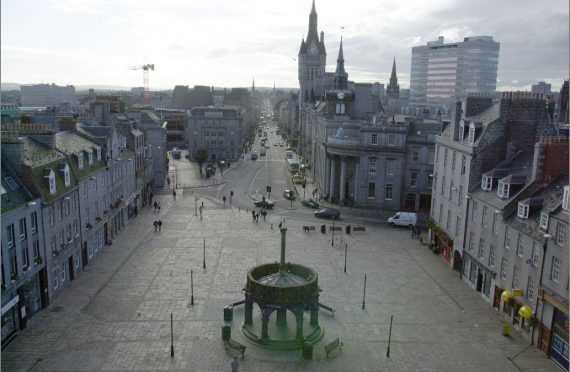Aberdeen’s air quality appears to be improving, with the city’s streets dropping off the pollution league tables for the first time.
No roads in the Granite City have been included in Friends of the Earth Scotland’s (FoES) latest list of the most toxic routes.
In previous years Union Street, Wellington Road and King Street had all been found to be breaching standards on air quality.
Last year FoES ranked Union Street as the third-worst in Scotland for nitrogen dioxide, which has been linked to asthma and other respiratory problems.
It found there were 43 microgrammes of it per cubic metre – above the European standard of 40mcg.
This year, however, that figure has dropped to 39.7mcg, well below the high of 58mcg found in Glasgow’s Hope Street.
King Street was 2016’s fourth-worst offender for particulate matter of soot, smoke and dust, with 19mcg.
However the latest figures show this has dropped to 44th place with 12mcg.
At 23mcg, Edinburgh’s Salamander Street has taken the top spot in the environmental group’s rankings.
Emilia Hanna from FoES said: “Union Street and Wellington Road have escaped our list by a hair’s width and still have worrying levels of air pollution which are still damaging to health.
“Air pollution has been linked with heart attacks, strokes, and cancers and can also inhibit children’s lung development.
“It is unacceptable to have continued levels of pollution on our streets that are harming our children’s prospects in life.”
Last month Aberdeen City councillors unanimously backed the next stage of a feasibility study into implementing a London-style low emission zone to cut pollution.
This would punish motorists not using the cleanest cars when entering the city centre, with potential penalties of up to £20 per day.
However, a report to go before councillors says the measure may not be needed if the local authority’s £6million hydrogen vehicles plan hits the necessary targets.
Friends of the Earth Scotland has backed the use of such a zone, and called for better infrastructure to support walking and cycling.
Ms Hanna added: “Only then will we see the step change we need to improve our health and adequately tackle the devastating silent killer that is air pollution.”
